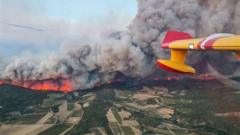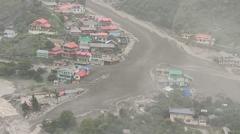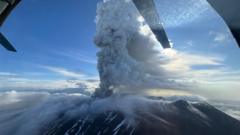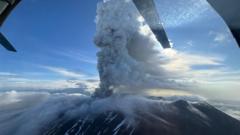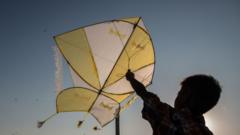Mount Lewotobi Laki-Laki erupts vigorously, sending ash high into the atmosphere and enforcing a 7km exclusion zone while authorities monitor ongoing volcanic activity and urge evacuations.
Indonesia on High Alert as Mount Lewotobi Laki-Laki Erupts
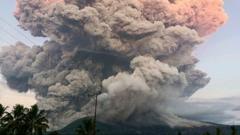
Indonesia on High Alert as Mount Lewotobi Laki-Laki Erupts
Authorities raise alarm after the twin-peaked volcano emits massive ash clouds and prompts evacuations on Flores Island.
Indonesia's Mount Lewotobi Laki-Laki, one of the nation's most active volcanoes, erupted dramatically on Tuesday evening, belching a vast ash cloud that soared more than 11 kilometers into the sky. As a result, officials declared the highest alert level across the region, specifically impacting the popular tourist destination of Flores.
Local volcanology agency confirmed the eruption occurred at 17:35 local time (10:35 BST), leading to a precautionary 7km exclusion zone being established around the crater of the 1,584-meter high volcano. Fortunately, initial reports indicated no injuries or structural damage due to the eruption.
In response to the eruption, the head of the geology agency, Muhammad Wafid, cautioned residents against any activities within the exclusion zone and raised the possibility of lahar floods—swift flows of mud and debris—if substantial rainfall occurs. Additionally, residents were advised to use face masks to shield themselves from the drifting volcanic ash.
The National Disaster Mitigation Agency reported that evacuations had already begun in at least one village, with ash fall noted in several communities outside the designated exclusion zone. A spokesman strongly recommended that local residents evacuate to safer locations due to ongoing tremors, indicating persisting volcanic activity.
This eruption follows multiple eruptions in November, which previously resulted in nine fatalities and the displacement of thousands. The last active phase of Lewotobi Laki-Laki took place in May, when officials again raised the alert to the maximum level. Named "Laki-Laki," meaning "man" in Indonesian, this volcano is paired with the taller and calmer "Perempuan," which means "woman" in the local language.

